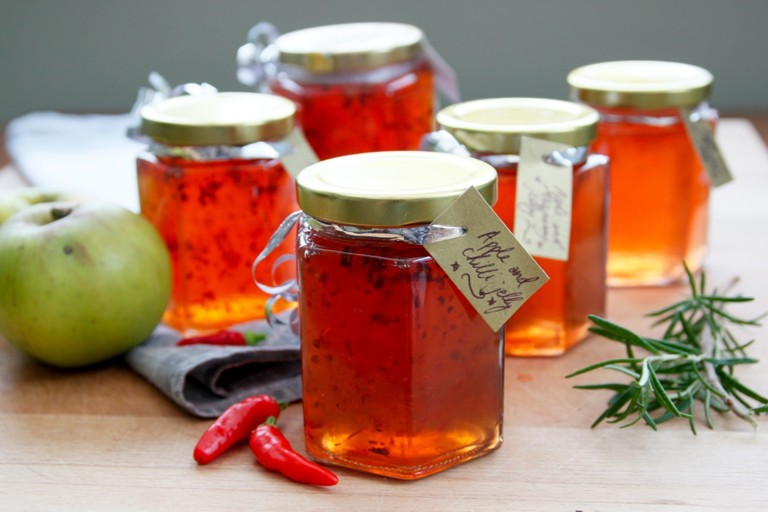Festive apple jellies
These festive apple preserves are as delicious as they are versatile, and make a superb edible Christmas gift. Alternatively, you could use these for your own festive feasting – they work brilliantly with a range of cheeses, cold cuts, or even Christmas dinner itself.
It’s always lovely to give a homemade gift at Christmas, and preserves have several advantages. They keep for ages, so don’t have to be eaten immediately at a time when, let’s face it, we all have far too much food in our houses anyway. They can be made in bulk and kept on hand to give to visitors or take to dinner parties, without the rush to prepare a last-minute present. They can be decorated with pretty ribbons and labels to make them something truly special and you can experiment with interesting flavours for unique and special gifts. Finally, they can be very economical, and none so much as these apple-based jellies, which have become something of an obsession of mine since acquiring Diana Henry’s wonderful preserving book, Salt Sugar Smoke. They use cooking apples, simmered until soft (no need to peel or even core the apples, so preparation time is minimal, which is exactly what you need at this time of year), and then you can add your own interesting and creative flavours to the apple base as it simmers into a delicious jelly.
Apple jellies always look beautiful, with their golden, russet glow, and I particularly like these two versions, with crimson flecks of chilli and slender rosemary needles suspended in the jelly. They’re fabulous with cured or roast meats and cheeses (the chilli one certainly has a kick to it!), so a very useful thing to have on standby over Christmas. If you want to make both flavours, simply divide the mixture between two pans once you have dissolved the sugar, adding the chill flakes to one and the rosemary to the other. Or experiment with other flavours – any herbs or spices work well, particularly thyme, sage, star anise and cinnamon.
Ingredients
Metric
Imperial
Apple jelly base
- 1.5kg cooking apples
- 1l water
- 900g of granulated sugar
- 2 lemons, juice only
Chili jelly
- 2 tsp chilli flakes, habanero
Rosemary jelly
- 2 sprigs of rosemary
Method
Get in touch
Please sign in or register to send a comment to Great British Chefs.


